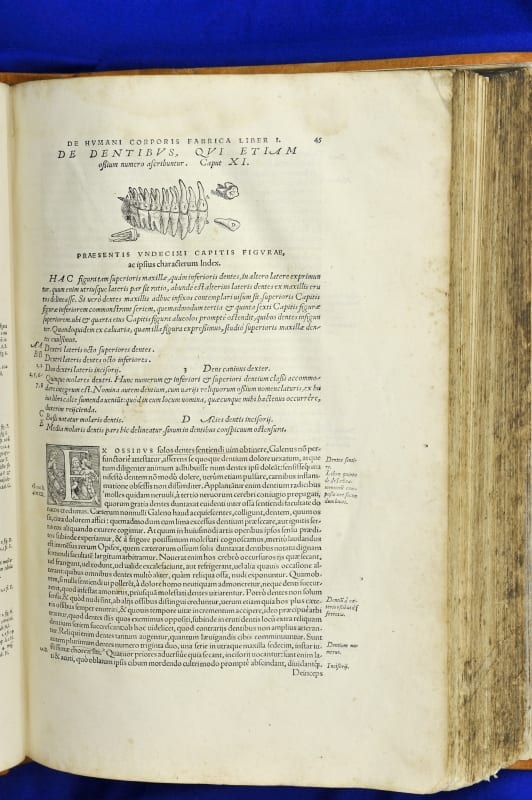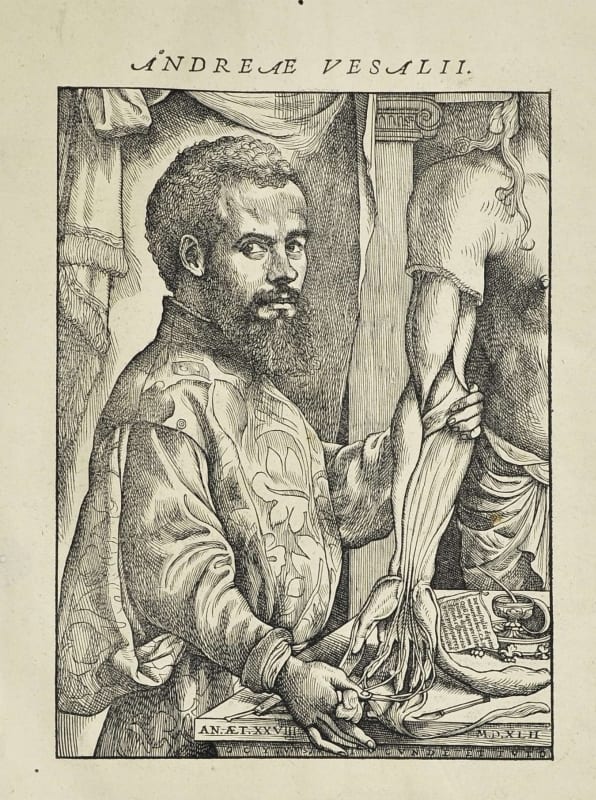This is the first in a series of blogs highlighting items relating to the history of dentistry within the College’s historical collections. Fittingly we begin with College’s founder, Maister Peter Lowe, who wrote about tooth extraction in his work The Whole Course of Chirurgerie, first published in 1597. Lowe’s extraction instruments included forceps, a punch and the pelican (the name pelican came from its supposed resemblance to the shape of the bird’s beak). These are illustrated in a woodcut in the 1612 edition of his work.
Artificial teeth were made from “Ivory, Whales bone or hounds teeth, which shall be fastened by a wyre or thread of gold” (Lowe, 1612 p.194). The instruments illustrated in the 1612 edition are very similar in design to those that can be found in the works of the great French surgeon Ambroise Paré. Paré rose from apprentice barber in Brittany to become head surgeon at the Hotel-Dieu in Paris and surgeon in ordinary to the French kings. Thanks to his apprenticeship training as a barber-surgeon he was practically able to master both tooth extraction as well as the whole of the dental medicine of his time. The College Library possesses a copy of Paré’s Oeuvres (Works) published in Paris in 1585. In the section on tooth extraction Paré notes that care must be taken during extraction as it is possible to dislocate the mandible nearby as well as cause concussion to the brain and eyes. Pulling the wrong tooth must also be guarded against, since the patient himself often does not know which tooth is the painful one. The operator is urged not to be too vigorous otherwise a piece of jaw could be torn off which could lead to fever, festering, bleeding and ultimately could result in death. Paré emphasises the importance of mastering the manipulation of the pelican and describes how the helper of a barber-surgeon extracted three healthy teeth when using the pelican rather than the painful broken tooth that required removal.

Illustrations of dental instruments from Ambroise Paré’s Ouvres,
Paré had part of the work of the great Flemish anatomist Vesalius translated into French and it is said to have influenced his work as a surgeon more than any other work. Vesalius only takes two pages to describe the teeth in his work De Humani Corporis Fabrica (on the Fabric of the Human Body), first published in 1543. This work, too, is amongst the treasures in the College Library. Using direct observations Vesalius corrects several previous errors that had been copied from ancient medical authors, particularly Galen.

Chapter on the teeth from De Humani Corporis by Vesalius.
On the eruption of the third molar he was able provide practical directions as well as cite personal experience. He writes that such teeth “make their appearance after puberty and the experience of love, often causing great pain; but physicians, not observing this, either pull out other teeth or, persuading themselves that these ones are affected by evil humours, overwhelm their patients with pills and suchlike drugs when in fact no better remedy can be applied to those suffering in this way than a light scarification of the gums beside the innermost teeth and sometimes a piercing of the bone. I am experiencing this myself at the moment, for as I write this in the twenty-sixth year of my life my thirty-second tooth is just appearing” (quoted from a translation of De Humani Corporis by W.F. Richardson, San Francisco, 1999). It appears then, that while Vesalius was compiling his masterpiece, he was suffering from toothache.

Woodcut of Andreas Vesalius from De Humani Corporis
If you wish to find out more about our book holdings then visit the College website and view the library catalogue. Alternatively email the library at library@rcpsg.ac.uk



[…] extraction of the teeth, with instruments very similar to those used by the 16th century surgeon Amboise Paré. In contrast to his predecessors he described in detail the process and techniques of dental […]
[…] This is the second blog about some of the dentistry items we have in the historical collections at the Royal College of Physicians and Surgeons of Glasgow. The first blog, published in November 2013 was on the topic of Renaissance Dentistry. […]